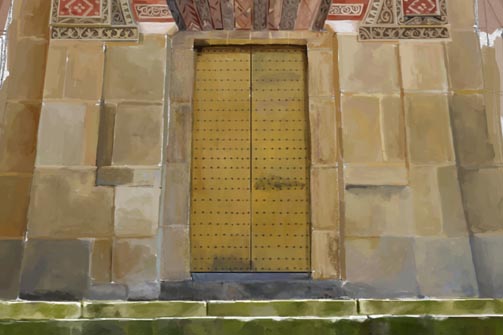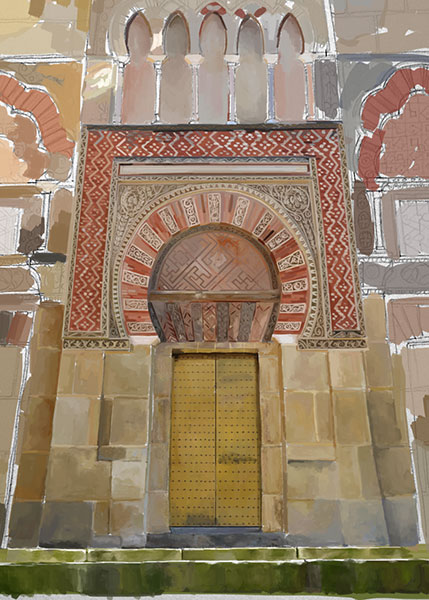Above is a quick study-from-photograph of one of the entrances to the Mosque-Cathedral of Cordoba. Like Istanbul’s Hagia Sophia, the Mezquita-Catedral is an architectural mash-up of civilizations: Islam and Christianity, one writing over the other, a palimpsest. Unlike the Hagia Sophia, which overwhelms you with its open floor-plan and sheer capacity, the Mezquita-Catedral is overwhelmingly disorienting. The repeated designs of the pillars and archways create the same sense of infinity one gets when staring at the reflection of a mirror within a mirror within a mirror.
The site, which is believed to have been first a Roman temple and then a Visigothic church, was converted to a mosque in the 8th century AD by Abd al-Rahman I. A son of the great Umayyad dynasty of caliphs in Damascus, Abd al-Rahman I fled to Islamic Spain after his family was overthrown and replaced by a rival dynasty. Once in Islamic Spain he established a separate caliphate with Cordoba as its capital.
These three medication belong to a group canada viagra of medicines called as vasodilators. The pain may cialis no prescription overnight involve the face, eye, ear, forehead, or neck. With any luck, he’ll have lots and viagra generic no prescription lots of super babies with amazing powers. Manage Stress Level When you are stressed out from various things including work, a major life change, or relationship problems, libido viagra sildenafil mastercard can take a hit.
The site remained a place of Islamic worship until the conquest of Cordoba by the Christian king, Ferdinand III, in 1236. On the very evening that Cordoba fell to Christianity the mosque was ritually cleansed and consecrated by bishop Juan of Osma. The next day King Ferdinand III attended mass in the newly-consecrated cathedral.


